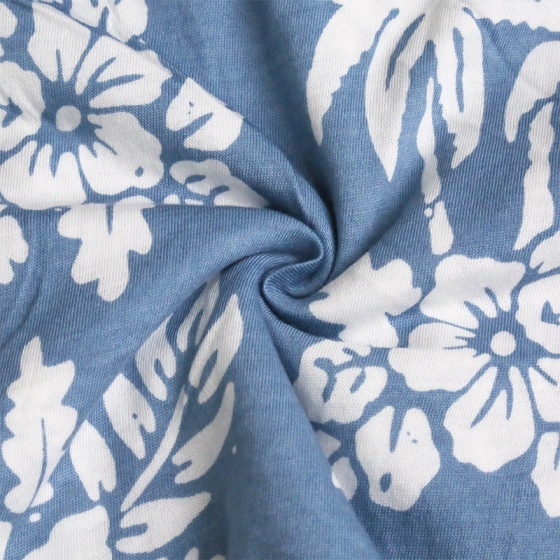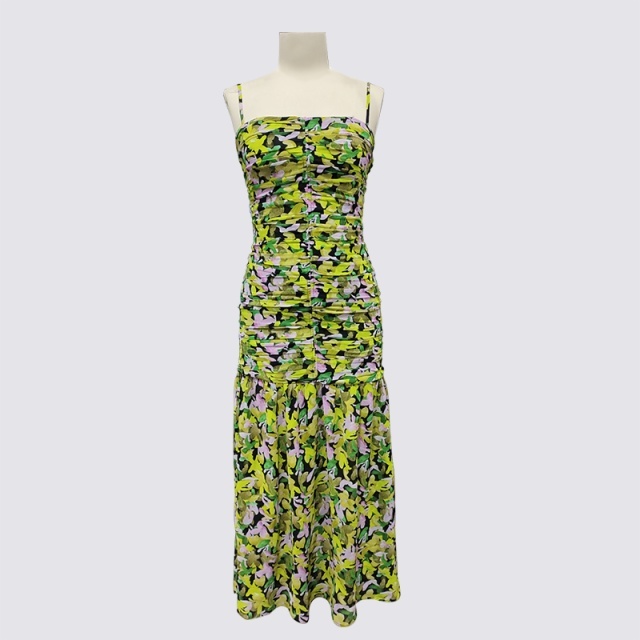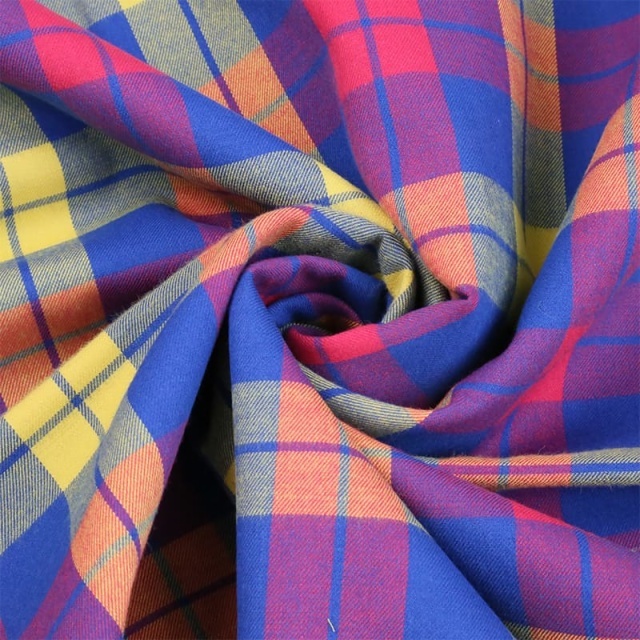The Environmental Benefits of Using Printed Cloth Fabric: A Sustainable Choice for a Greener Future
Aug 06,2025
The Environmental Benefits of Using Printed Cloth Fabric
Introduction
In recent years, the textile industry has witnessed a significant shift towards sustainability. One of the most compelling options in this movement is **printed cloth fabric**. This versatile material not only meets the aesthetic needs of consumers but also offers a myriad of environmental benefits. In this article, we will delve into the various ways that using printed cloth fabric can positively impact the environment, from reducing carbon footprints to promoting sustainable practices.
1. Understanding Printed Cloth Fabric
Printed cloth fabric refers to textiles that have undergone a printing process to add patterns, designs, or images. This type of fabric can be made from various materials, including cotton, linen, and polyester. The printing techniques can vary, encompassing traditional methods like screen printing and modern digital printing.
1.1 The Printing Process and Its Impact
The printing process plays a crucial role in determining the environmental footprint of the fabric. Eco-friendly printing methods use water-based inks and avoid toxic chemicals, minimizing the adverse effects on both the environment and human health. By choosing printed cloth fabric produced with these sustainable practices, consumers can significantly reduce their impact on the planet.
2. Reducing Waste Through Reusable Textiles
One of the most significant environmental benefits of printed cloth fabric lies in its potential to reduce waste. Unlike single-use materials, such as plastic bags or disposable tablecloths, printed cloth can be reused multiple times.
2.1 Longevity of Printed Cloth Fabric
High-quality printed cloth fabric is durable and can withstand numerous washes without losing its vibrant colors or structural integrity. This longevity means that consumers are less likely to dispose of the fabric after a short period, ultimately reducing textile waste.
2.1.1 Comparison with Fast Fashion
The fast fashion industry is notorious for its rapid production cycles and disposability. In contrast, printed cloth fabric encourages a more sustainable approach by promoting the idea of investing in quality pieces that last longer, thereby minimizing waste.
3. Conserving Resources and Energy
The production of textiles often requires substantial resources, including water, energy, and raw materials. Printed cloth fabric, especially when produced with eco-friendly practices, can help conserve these vital resources.
3.1 Water Conservation in Textile Production
Traditional textile dyeing and printing processes can be water-intensive. However, innovative technologies in the production of printed cloth fabric have dramatically reduced water consumption. Techniques like digital printing utilize far less water than conventional methods, making them a more environmentally friendly choice.
3.1.1 The Role of Sustainable Materials
Using organic or recycled materials in printed cloth fabric also contributes to resource conservation. By sourcing materials sustainably, manufacturers reduce the need for virgin resources, leading to a lower overall environmental impact.
4. Lowering Carbon Footprints
Every step of the textile production process contributes to greenhouse gas emissions. By shifting to printed cloth fabric that employs eco-friendly methods, we can make strides toward reducing our carbon footprints.
4.1 Sustainable Transportation Methods
Choosing locally produced printed cloth fabric can significantly lower emissions associated with transportation. When consumers prioritize local options, they not only reduce their carbon footprints but also support local economies.
4.1.1 Importance of Ethical Sourcing
In addition to transportation, the ethical sourcing of materials used in printed cloth fabric contributes to lower emissions. By selecting suppliers that prioritize sustainability, brands can further reduce their environmental impact.
5. Encouraging Eco-Friendly Practices in Fashion
The rise of printed cloth fabric aligns with a broader movement toward sustainable fashion. As consumers become more conscious of their choices, the demand for environmentally friendly options increases, prompting brands to adopt sustainable practices.
5.1 The Shift Towards Eco-Conscious Consumerism
Consumers are increasingly seeking brands that prioritize sustainability. This shift not only encourages companies to adopt eco-friendly practices but also fosters a culture of environmental awareness.
5.1.1 Example of Eco-Friendly Brands
Several brands have successfully integrated printed cloth fabric into their offerings while emphasizing sustainability. These brands often showcase their commitment through transparent practices, such as ethical sourcing and environmentally friendly manufacturing processes.
6. Supporting Biodiversity and Ecosystems
The production of textiles can have far-reaching effects on biodiversity and ecosystems. By choosing printed cloth fabric made from sustainable materials and eco-friendly practices, consumers can help support a healthier planet.
6.1 Reducing Chemical Runoff
Traditional textile manufacturing often involves the use of harmful chemicals that can seep into waterways, harming aquatic life and disrupting ecosystems. Printed cloth fabric produced with eco-friendly inks and dyes minimizes this risk, promoting healthier water systems.
6.1.1 Benefits to Local Flora and Fauna
By reducing chemical runoff, printed cloth fabric helps protect local flora and fauna, contributing to a balanced ecosystem. This preservation is crucial for maintaining biodiversity and overall environmental health.
7. The Role of Education and Awareness
Understanding the environmental benefits of printed cloth fabric is essential for driving change. Education and awareness play a significant role in encouraging consumers to make sustainable choices.
7.1 Community Engagement and Workshops
Community initiatives, workshops, and educational programs can help raise awareness about the benefits of printed cloth fabric. These efforts can empower individuals to make informed decisions and adopt sustainable practices in their daily lives.
7.1.1 Collaborations with Environmental Organizations
Collaborating with environmental organizations can amplify awareness efforts. Brands that partner with these organizations often gain credibility and reach a broader audience committed to sustainability.
8. Frequently Asked Questions (FAQs)
8.1 What are the environmental benefits of printed cloth fabric?
Printed cloth fabric reduces waste, conserves resources, lowers carbon footprints, and supports biodiversity, making it an environmentally friendly choice.
8.2 How does printed cloth fabric contribute to sustainable fashion?
By encouraging consumers to invest in durable, reusable textiles, printed cloth fabric promotes sustainable fashion practices and reduces reliance on fast fashion.
8.3 What printing methods are most eco-friendly?
Eco-friendly printing methods, such as digital printing and water-based inks, significantly reduce water consumption and the use of harmful chemicals.
8.4 Can printed cloth fabric be recycled?
Yes, many printed cloth fabrics can be recycled or repurposed, further reducing waste and promoting a circular economy.
8.5 How can I support sustainable practices in the textile industry?
You can support sustainable practices by choosing eco-friendly brands, advocating for sustainable textiles, and educating yourself and others about the environmental impact of fashion.
Conclusion
The environmental benefits of using printed cloth fabric are clear and compelling. From reducing waste and conserving resources to lowering carbon footprints and supporting biodiversity, this sustainable textile option offers numerous advantages. As consumers increasingly prioritize eco-friendly choices, the textile industry has the opportunity to embrace change and make a significant impact on our planet's health. Investing in printed cloth fabric is not just a personal choice; it's a step towards a greener, more sustainable future for everyone. Embrace this change today and become a part of the movement towards a healthier planet.
More Events
The Environmental Benefits of Using Printed Cloth Fabric: A Sustainable Choice for a Greener Future
The Environmental Benefits of Using Printed Cloth Fabric Introduction In recent years, the textile industry has witnessed a significant shift towards sustainability. One of the most compelling options in this movement is **printed cloth fabric**. This versatile material not only meets the aesthetic needs of consumers but also offers a myriad of environmental benefits. In this article, we will delv
Aug 06,2025
The Allure of Vintage Patterns in Linen Printed Fabric: A Timeless Elegance
The Allure of Vintage Patterns in Linen Printed Fabric Table of Contents 1. Introduction to Vintage Patterns in Linen Printed Fabric 2. The Rich History Behind Vintage Designs 3. Key Characteristics of Linen Printed Fabrics 4. Popular Vintage Patterns and Their Significance 5. Practical Uses of Vintage Linen Printed Fabrics 6. Elevating Home Decor with Vintage Patterns
Aug 04,2025
The Comprehensive Guide to Crafting High-Quality Cotton Dyed Fabric
The Comprehensive Guide to Crafting High-Quality Cotton Dyed Fabric Table of Contents 1. Introduction to Cotton Dyed Fabric 2. The Significance of High-Quality Cotton 3. Steps in the Cotton Dyeing Process 3.1 Cotton Fiber Selection 3.2 Preparation of Cotton Fabric 3.3 Dyeing Techniques 3.4 Post-Dyeing Process 4. Qua
Aug 02,2025
Do Not Heasite To Contact W&S, Your Comprehensive Solution Provider Now!
We like produce phone cases but we more like to see you earn lots of money by working with us.
Quick Link
Garment
Copyright © Nantong Wang and sheng Textile Co., Ltd. All Right Reserved.

Whatsapp: 008613861954999
Looking forward to your call
Tel: 0086-513-80609999
Looking forward to your call
Email: Nick.wang@ntwangsheng.com
Looking forward to your letter





